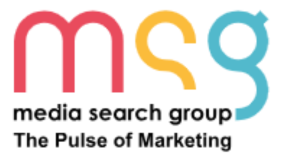Generative Engine Optimization (GEO) to Future-Proof Your SEO
GEO is a revolution in search behavior. Today's customers don't "Google it" like they used to. They ask ChatGPT, consult Gemini, and query Perplexity. These AI engines are giving answers instantly, with sources and citations, instead of listing the top ten blue links. If your content isn't built for those answers, you're invisible.
That's where Generative Engine Optimization (GEO) comes in. In the world of GEO, you're not optimizing for clicks. You're optimizing for citation.
Here's what GEO means for you:
- If ChatGPT answers a question in your industry, your content could be the cited source.
- If Perplexity pulls insights about your field, your site could be the name that appears.
- If an AI assistant recommends services like yours, you could be the business that shows up.
…if and only if your content is optimized for generative engines.
Who Needs Generative Engine Optimization Right Now?
Every business that:
- Wants to appear in ChatGPT, Gemini, Perplexity, or other AI engines' answers
- Wants to build an LLM content strategy that future-proofs their SEO
- Has authority but isn't being cited
- Wants their answers to become the internet's answers
If you're serious about AI search engine visibility. Start optimizing for the LLMs that guide people
Why Media Search Group for Generative Engine Optimization
While the industry's most marketing agencies are still chasing backlinks and keyword density, we've been testing how to optimize content for AI – the way LLMs process and cite.
1. We Know How AI Chooses What to Cite
We've broken down LLM behavior and mapped out how ChatGPT prefers specific metadata, how Perplexity scans for structured semantic markup, and how Gemini prioritizes clean, unambiguous context.
We've reverse-engineered:
- Why some sites appear in AI answers…
- …and why others with more traffic, better design, and longer articles don’t.
And we call it GEO SEO.
2. We Optimize Content So It Is More Likely to Be Cited by AI
We're not just another SEO company. With over 13+ years of experience and our insights into how AI engines answer, we develop an entire generative AI SEO framework to:
- Get your content noticed by AI agents
- Write llms.txt the right way
- Structure metadata so it's AI-readable and schema-compliant
- Make your content appear in ChatGPT answers
- Engineer your site for citation-worthiness
From AI citation optimization to RAG formatting, we do it all.
3. A Human-First Process Built for Machine-First Results
We all know that your readers are still human. But who is making your content more visible? They're generative engines trained on massive datasets, querying billions of documents, and making split-second decisions on:
- Which content is trustworthy
- Which content is recent and relevant
- Which content fits the user's intent
That's where we come in.
We help you write, design, structure, and publish content for AI search, without losing the human voice that built your brand in the first place.
4. From llms.txt to LLM Content Strategy – We Handle It All
Do you need to implement llms.txt correctly? We'll set it up, optimize it, and keep it updated.
Don't know how to structure your site for AI metadata optimization? We'll build your markup, Schema, and meta fields for maximum retrievability.
Unsure how to make your content answer-worthy? We'll write it with generative AI SEO tactics that attract citations, not just clicks.
Want your website to be AI-aware and LLM-ready? We audit your entire content library and rebuild what matters.
We even help you monitor AI search engine visibility, so you'll know when you're being cited and where.
Ready to Future-Proof Your Online Presence with Generative Engine Optimization? Book a consultation.
What is Generative Engine Optimization (GEO)?
Generative Engine Optimization (GEO) is the practice of structuring, formatting, and writing content so that Large Language Models (LLMs) like ChatGPT, Gemini, Claude, and Perplexity can find, understand, and most importantly cite your content as a reliable source in their answers.
If SEO was built for search engines, GEO is built for answer engines.
It's not about ranking pages anymore. It's about becoming the answer.
GEO is a new approach to digital visibility that assumes users aren't scrolling through ten search results anymore. They're asking questions and, instead of clicking links, they're reading summarized answers powered by AI.
GEO vs. Traditional SEO: How Are They Different?
Traditional SEO taught you how to write for people skimming Google. On the other hand, GEO teaches you how to write for Large Language Models (LLMs) that scan billions of words and decide which source deserves to be cited.
Key Differences Between GEO and Traditional SEO
| Aspect | Traditional SEO | Generative Engine Optimization (GEO) |
|---|---|---|
| Primary Focus | Optimizes for human searchers skimming search results | Optimizes for AI models scanning content for citations |
| User Behavior Target | Click-through rates, bounce rate, time on page | High-confidence, fact-based content for AI citation |
| Keyword Strategy | Short-tail and exact-match keywords | Intent-rich question-based phrases and semantic context |
| Example Query Approach | "best credit card 2025" | "Which credit card offers the best travel rewards for freelancers in 2025?" |
| Content Formatting | Optimized for meta descriptions and snippets | Optimized for generative summaries and answer formatting |
| Output Goal | Appearing in search engine results to earn a click | Being quoted or cited by AI models in answers |
| Content Structure | Focused on headlines, readability, and user engagement | Requires semantic HTML, structured metadata, and factual clarity |
| SEO Tactics | Meta tags, backlinks, keywords, mobile optimization | llms.txt, Schema.org markup, authorship signals, factual anchoring |
| Snippet Strategy | Structured snippets following Google's formatting rules | RAG-friendly paragraphs and context-rich summaries for LLMs |
| Authority Signals | Page rank, backlinks, traffic | Attribution clarity, date, source credibility, and markup trustworthiness |
| Search Engine Type | Traditional search (Google, Bing) | Answer engines (ChatGPT, Gemini, Perplexity, Claude) |
| Purpose | Earn human clicks from SERPs | Earn citations and references in AI-generated content |
| End Goal | Get found on search result pages | Get quoted inside AI-driven conversations and answers |
If you're not already optimizing content for AI, you're losing tomorrow's traffic and trust.
Why GEO Matters in the Age of Generative AI and Answer Engines
If your content isn't structured to be seen and cited by generative AI engines, it's going to hurt your online visibility. Here is why:
1. AI Assistants Are the New Search Engines
People aren't just searching anymore. They're asking AI assistants like:
- ChatGPT for product recommendations
- Gemini for medical explanations
- Perplexity for research and citations
- Claude for summaries and insights
All of them are AI answer engines trained on massive datasets that pull in real-time, live web data. It means your site, your blog, and your insights can become a part of the answer fabric if your content is built for it.
That's what Generative Engine Optimization does.
2. The Rise of AI-Driven Search Is Already Here.
Google's Search Generative Experience (SGE) is rolling out across the globe, which doesn’t just return links but also summaries, and that too on top.
If your content is structured for LLM retrieval, you can be the voice behind that summary.
Meanwhile, platforms like Perplexity AI and You.com are creating fully AI-driven search ecosystems where citation is the new click.
Even ChatGPT's browsing mode is trained to fetch live pages that are correctly cited and formatted.
So, you need to optimize for LLM queries, AI snapshots, chatbot summaries, and contextual search layers powered by large language models.
How Do Generative Engines Choose Sources to Cite?
- Present explicit information that matches user intent
- Include clearly labeled sources, authors, and dates
- Use semantic HTML so that LLMs can parse and understand the hierarchy
- Provide fact-based, entity-rich content that AIs can extract and reuse with confidence
- Align with retrieval-augmented generation (RAG) principles to support generative tasks
Generative engines are choosing their sources by structure, context, and credibility.
GEO helps your content:
AI models don't "rank" content like Google. They score trustworthiness, parse readability, and weigh attribution strength.

How to Make Content Appear in ChatGPT Answers: Core Elements
Now the big question is: How do you get ChatGPT to cite your content? How do you become the source that shows up for users' queries?
AI citation optimization is part art, part structure, and 100% intentional.
Here's how we make sure your content gets picked up, parsed, and cited by large language models and generative engines.
1. Focus on Structured Headings and Semantic HTML
LLMs look for clarity as they need to understand where your main idea starts, what supports it, and how it's organized.
That's where structured headings (H1–H6) and semantic HTML come in.
Use H1 to H6 Like You're Writing a Book
- H1 = the title of the page. Use it once. Make it clear.
- H2s = major sections. Think of them as chapters.
- H3s and H4s = subpoints and explanations that break down each chapter.
Why does it matter? AI models like ChatGPT use heading hierarchy to understand topic relevance and answer confidence.
Use Semantic Tags for Semantic Understanding
Stop depending only on < div >.
Use:
- < article > for blog posts or editorial content
- < section > to group related parts
- < aside > for extra context, notes, or tips
When you mark up your content semantically, you make it easier for AI to:
- Know what's most important
- Separate main ideas from supporting data
- Choose which parts to quote directly
It helps you improve AI search engine visibility.
2. Use AI-Focused Metadata and Markup
To make your content LLM-aware, you'll need to write llms.txt, instead of just relying on title tags and meta descriptions.
What is llms.txt? (And Why It Matters)
Think of llms.txt as the robots.txt for AI models. It's a new, emerging standard that lets you control how LLMs like ChatGPT or Perplexity access your site.
With a properly configured llms.txt, you can:
- Allow or disallow AI crawlers
- Specify terms of use
- Direct engines to high-value content
- Increase the likelihood of your site being cited
3. Embed AI-Specific Metadata
Add structured metadata like:
- Author name
- Date of publication or last update
- Citeable source URLs
This builds trust for AI engines that favor verifiable, recent, and attributed content.
4. Use Schema Markup That Speaks AI
The right Schema types increase your chance of appearing in AI search results.
Focus on:
- FAQPage
- HowTo
- Article
- WebPage
- Organization and Person schemas for authority
These formats help LLMs understand the meaning behind your content and extract it with confidence.
5. Source Attribution and Citability
AI cites you when your content is structured, credible, and attributable.
To ensure LLMs don't skip you, you need to indicate clearly:
- Who you are
- When the content was published
- Where the source lives
To build LLM trust, add clear headers like:
- "Written by [Author Name], Marketing Director at [Company Name]"
- "Updated June 2025"
- "Source: [Your URL]"
Tips to Get Referenced by AI Agents
- Write fact-based, objective content
- Use primary data if available
- Link to reputable sources (this strengthens your credibility)
- Avoid superfluous content.
- Use bullet points, definitions, lists, and clear language that is easy to summarize and cite
Being cited in ChatGPT or Gemini isn't just about quality; it's about being reference-ready.
How to Optimize Content for Generative AI and LLMs
GEO SEO is about what you say and how you say it.
1. Use of Entity-Rich and Fact-Based Writing
AI models pattern-match facts, entities, and connections. That's why writing with named entities (people, companies, tools, and places) increases your chances of being cited.
Example:
Instead of writing:
"Many tools offer CRM functionality."
Write:
"Platforms like Salesforce, HubSpot, and Zoho offer CRM tools tailored to small businesses."
LLMs remember named entities, and they cite sources that contain them.
Pair this with verifiable data, such as stats, studies, and benchmarks, to increase your chances of being cited.
2. Add Explicit Contextual Signals
LLMs doesn't understand ambiguous information, so your content must answer:
- Who?
- What?
- When?
- Where?
Examples:
- "As of June 2025, Google's SGE now powers over 70% of mobile queries in the U.S."
- "According to the CDC's 2024 health report..."
- "Our analysis, conducted in February 2025, shows..."
3. Build for Retrieval-Augmented Generation (RAG)
RAG is how LLMs supplement their static training with live data pulled from search.
To appear in that "live pull," your content must be:
- Segregated into clean, retrievable blocks (short paragraphs, bullets, and subheadings)
- Written in standalone insights (so snippets can be quoted without needing extra context)
- Structured for high signal, low noise
- Scan
- Extract
- Reference
This is why we build RAG-friendly content formats that let AI:
...without having to interpret.
4. Optimize for Zero-Click Search and AI Overviews
In the past, you fought for the click. Now, you fight for the quote. AI Overviews on Google, Gemini, or Bing are essentially zero-click summaries.
But if they cite you, you win without a click.
To improve your presence in AI snapshots, you need to:

- Use direct answers in your writing (e.g., "The best time to post on LinkedIn is...")
- Embed FAQ sections
- Write with question → answer logic
- Label your content types clearly: "Checklist," "Guide," "Stats"
- Prioritize clarity > cleverness
Technical Concepts to Implement Generative Engine Optimization
Implementing GEO is the part that most brands miss and most marketing agencies still haven't figured out.
1. Set Up llms.txt for Your Site
llms.txt is your direct line of communication with AI crawlers. Think of it like robots.txt, but specifically for Large Language Models like ChatGPT, Claude, and Gemini.
How to Write llms.txt (Technical Access Instructions for LLM Crawlers)
Each line in your llms.txt file tells AI engines what they can or can't access.
User-Agent: GPTBot
Allow: /
User-Agent: ClaudeBot
Disallow: /private/
User-Agent: *
Allow: /
How to Create llms.txt Markdown Format (Semantic Content Guidance for LLM understanding)
Your LLM markdown text file should use this exact structure. This file is written in human language and easy to read for LLMs.
# [Your Website Name]
> One-line description of your site’s purpose
## Core Content Sections
### [Section Name]
- [Page Title](URL): Brief description of value to readers
## Content to Handle With Care
- [Path or Page](URL): Reason for limited or outdated relevance
## Additional Context
- Pages updated monthly
- Structured with semantic HTML and schema.org
You can use llms.txt to:
- Allow or disallow access to parts of your website
- Explicitly invite LLMs to cite certain content
- Control what AI models learn from your site
Where to Place llms.txt
Just like robots.txt, place it in your root directory:
yourdomain.com/llms.txt
That's where AI bots will look.
Rules for Allowing or Blocking LLMs
Use User-Agent to target specific bots:
- GPTBot (OpenAI's ChatGPT)
- Google-Extended (for Bard/Gemini)
- ClaudeBot (Anthropic's Claude)
- CCBot (Common Crawl, used in training)
Then use Allow: or Disallow: paths to control access.
Pro Tip: If you have content built specifically to optimize content for AI, mark it as "Allow" and make it easy to access and crawl to improve your AI search engine visibility.
2. Applying AI-Specific Meta Tags
Once AI reaches your page, AI-friendly metadata helps AI engines understand what it's reading.
Start With Social Metadata
Even though they were built for social previews, metadata like:
- Open Graph tags
- Twitter Cards
…they still help AI engines parse key details like:
- Title
- Description
- Author
- Date
- Image context
… as they provide structured context.
Go Beyond Basics with Custom AI Tags
While not officially standardized yet, many AI-aware developers are already experimenting with:
< meta name="ai-parsing" content="true" >
< meta name="llm-topic" content="Generative Engine Optimization" >
< meta name="source-credibility" content="high" >
These emerging tags signal to LLMs how to treat your content during summarization.
While Google may not "see" these yet, AI engines in browsing mode do.
3. Monitor and Troubleshoot GEO Performance
This is where most GEO SEO strategies fail. They're launched and then forgotten.
Here's how to keep your content in the AI spotlight.
Tools to Measure AI Citations
There's no one-click dashboard yet, but you can use a stacked system:
- Perplexity AI's citation viewer – See which URLs are being referenced
- Mention tracking tools (like Brand24, BuzzSumo) – Spot brand name mentions in AI summaries
- ChatGPT + Bing browsing queries – Run queries manually to see if your pages are cited
- Use custom UTM parameters in cited URLs
- Monitor direct traffic spikes from AI browsers (yes, they show up in Analytics)
Use Google Search Console for Structure Testing
Check:
- Rich snippet eligibility
- Schema validation
- Crawlability for newly structured AI content
If your GEO content is ignored, it's usually:
- A structural problem (missing headings, tags)
- A metadata issue (bad markup)
- A credibility gap (no source or date info)
So, monitor, tweak your strategy, and repeat the process to get cited by AI answer engines.
Why GEO is Non-Negotiable for Future Visibility
Search is no longer a ten-blue-links game. It's a one-answer world now. And the answer is almost always AI-generated.
If you're not building content for LLMs,
If you're not structuring for answer engines,
If you're not cited by tools like ChatGPT, Perplexity, or Gemini…
You're being left out of the conversation and are invisible to the next generation of search.
That's what makes Generative Engine Optimization non-negotiable.
It's the future of SEO and the foundation of brand visibility in the age of AI.
GEO is how your brand gets quoted, how your content becomes trusted, and how your business stays visible in a world where machines write the answers.
This is your moment to act early, lead boldly, and build a future-proof content strategy that dominates both human and AI discovery.
We're ready to help you shift with the changing world of SEO by offering generative engine optimization services.
Frequently Asked Questions
GEO stands for Generative Engine Optimization. It's a new strategy to optimize your content so that AI tools like ChatGPT, Gemini, and Perplexity can find it, understand it, and quote it in their answers. Unlike traditional SEO that tries to rank on Google, GEO focuses on helping AI cite your content when answering questions.
llms.txt is like a guide for AI crawlers (such as ChatGPT), while robots.txt tells traditional search engines (like Google) what pages to crawl or ignore. If you want large language models to access, learn from, or cite certain pages on your site, llms.txt helps you control that. It's a newer file specifically for managing AI access.
Yes, absolutely. GEO is all about making your content easy for AI to read and trust. If you follow GEO best practices, like using proper headings, adding author names, publishing dates, and structured data, you can increase the chances that ChatGPT or other AI tools will pull your content into their answers.
Yes. Traditional SEO and GEO work together. You still need traditional SEO to rank in search engines like Google. But GEO takes it a step further and gets your content seen and cited in AI-generated answers, which are becoming more common across search platforms. The best strategy is to combine both.
Ready to Unlock AI-Driven Success with Generative Engine Optimization (GEO)
Let us help you navigate the world of GEO SEO and get cited by AI answer engines.








